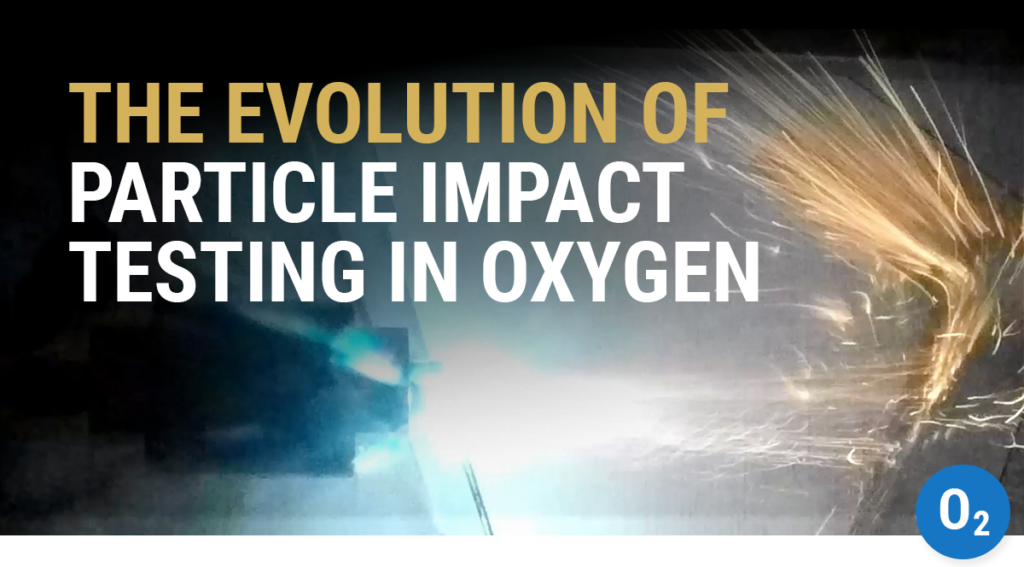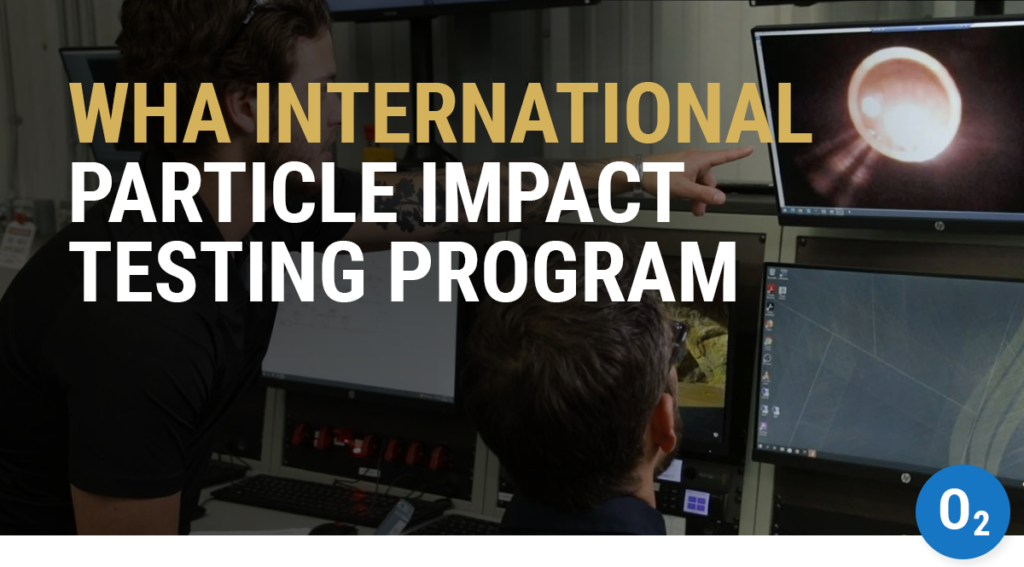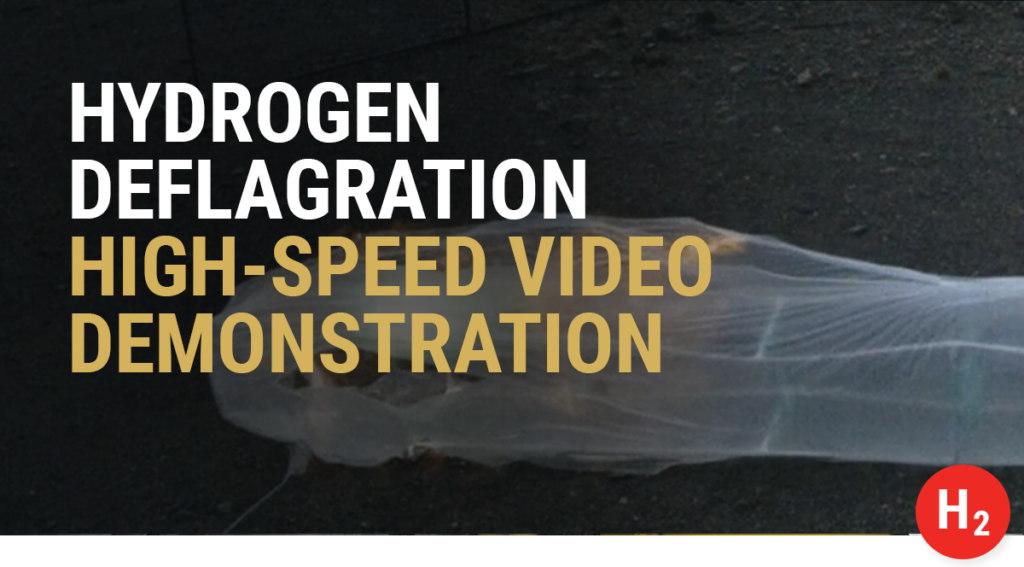Hydrogen Deflagration Demonstration
This high-speed video captures a deflagration test from a recent WHA hydrogen safety training event.
The test simulates an outdoor or unconfined release of hydrogen into ambient air. Hydrogen leaks from components or intentional releases of hydrogen from a system both create localized combustible mixtures before dispersing into the atmosphere. In most cases, if ignition occurs in the combustible gas cloud, the result will be an open-air deflagration.
In this case, the plastic bag confined the gas mixture, allowing control of gas composition and mixing without creating confined overpressures (since the plastic bag fails very early in the event). Congestion is created by placing objects in the way of the blast wave. In the real world, congestion is created by facility layout, piping configurations, and nearby components. In any explosion, congestion acts to accelerate the flame front and increase the blast overpressure. In this demonstration, you can see the flame front accelerate from the left, where ignition occurs, to the right, through the combustible mixture.
What is hydrogen deflagration?
Hydrogen deflagration is a type of explosion that occurs when hydrogen gas mixes with air or oxygen and then ignites. Deflagration is a combustion process where a flame front moves through the fuel at subsonic speeds.
Hydrogen is highly flammable and can ignite at a lower energy input than most other fuels, which makes it a potential hazard in many industrial and scientific applications. When hydrogen gas is released into the atmosphere, it can quickly mix with oxygen to form an explosive mixture. If an ignition source is introduced to this mixture, a deflagration can occur.
During a hydrogen deflagration, the flame front moves through the hydrogen-air mixture, consuming the fuel and generating heat and pressure. The pressure wave generated by the deflagration can cause damage to surrounding equipment, structures, and personnel.
It’s important to note that a hydrogen deflagration is different from a hydrogen detonation. In a detonation, the reaction occurs much more rapidly and generates a shock wave that moves through the fuel at supersonic speeds. This can result in more severe damage than a deflagration.
Attend a hydrogen safety course with live test demonstrations
In-person hydrogen safety training courses at WHA International feature live test demonstrations that bring the science to life. At our unique Test and Training Facility, students can safely observe a number of dynamic demonstrations including:
- Jet flame test (hydrogen v. methane)
- Spontaneous ignition of hydrogen
- Hydrogen tank explosion
- Open-air hydrogen deflagration
Visit our training page to find upcoming hydrogen safety courses featuring live hydrogen test demonstrations like this one.
Share this entry
Related Articles
The Evolution of Particle Impact Ignition Testing in Oxygen
Earlier this year, ASTM hosted a two-day workshop on particle impact ignition organized by the ASTM Committee G04 on the…
Particle Impact Testing in Oxygen Supports Material Selection and Component Design
Particle impact testing helps determine the conditions required to ignite particulate contamination, materials, or components in oxygen...
Hydrogen Deflagration Demonstration
This high-speed video captures a deflagration test from a recent WHA hydrogen safety training event. The test…
Request an expert
consultation
Contact us to request a free consultation with an experienced engineer who can help you better understand your needs and our solutions.



